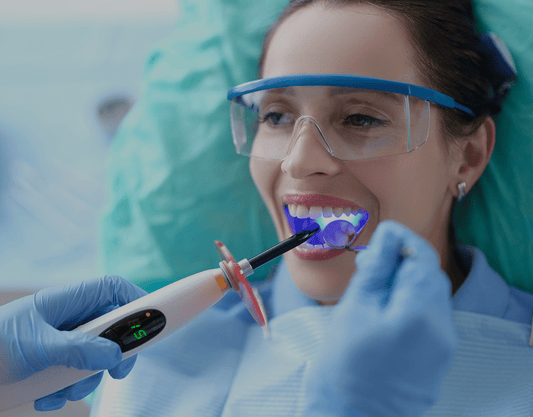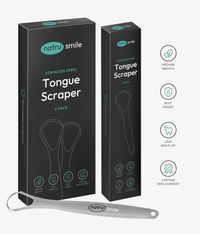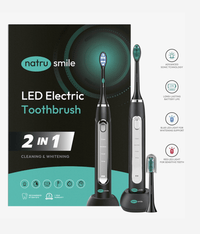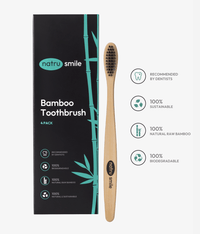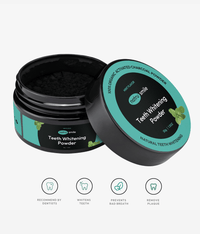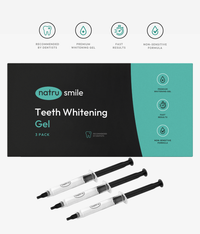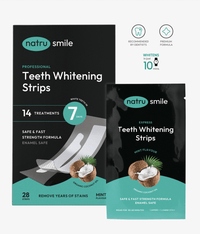
All products are certified by dental expert Dr. Greg Grillo
Flexible Spending Account (FSA) teeth whitening coverage is a hot topic–especially in regards to what an FSA will and won’t cover, where it draws the line, and what you can expect to pay to improve your smile.
So what do you need to know? We’re glad you asked.
What Is A Flexible Spending Account (FSA) And How Does It Work?
Before we dive into FSA teeth whitening, it’s imperative to understand what an FSA is and how it operates.
A Flexible Spending Account (otherwise known as a “flexible spending arrangement”) is a bank account you place money into that you use to pay for certain out-of-pocket healthcare costs. This money isn’t taxable, which means you will save an amount equal to the taxes you would have paid on the money you set aside for these costs.
Employers may make contributions to your FSA, but are not required to. With an FSA, you submit a claim to the FSA through your employer with documentation of the medical expense and a statement that it hasn't been covered by your insurance. From there, you will get reimbursed for your costs.
To learn more about FSAs and how to best utilize yours, contact your employer for details about your company’s specific FSA.
Can I Use Flexible Spending Account Dollars For Teeth Whitening?
Teeth whitening covered by FSA is a nuanced topic. Officially, funds from an FSA cannot be used for teeth whitening costs. This is because the U.S. Internal Revenue Service (IRS) specifically excludes various medical expenses spent on “unnecessary cosmetic procedures”, such as teeth whitening, as declared in IRS Publication 502.
This exclusion extends to other cosmetic dental procedures and tools like, but not limited to, home whitening kits and dental veneers. However, a caveat does exist: these cosmetic procedures are covered by the FSA if a doctor’s note can be supplied stating that the procedure is medically necessary. Despite this potential workaround, however, FSA for teeth whitening should not be expected.
How Much Does Teeth Whitening Cost With FSA?
Although teeth whitening is not eligible for coverage via an FSA, that doesn’t mean you can still put that FSA money towards dental expenses that bolster your overall dental hygiene–therefore preventing stains and discoloration before they occur.
These dental-related deductibles include:
- Teeth cleanings
- Fillings and sealants
- Crowns
- Bondings
- Dentures
- Tooth extractions
- Inlays and onlays
- Orthodontia
- All diagnostic and preventative services
- Treatments for gingivitis, gum recession, and oral surgery
We will go into greater detail about the most common of these dental deductibles below.
How Much Does Teeth Whitening Cost Without FSA?
Three major teeth whitening options are available either over-the-counter or in-office, with each having varying price points.
- In-Office Teeth Whitening: In-office teeth whitening features the professional use of high-concentration peroxide gel, which is applied to the teeth after the gums have been protected with a paint-on rubber dam. Generally, the peroxide remains on the teeth for several 15 to 20 minute intervals that add up to a maximum of one hour. Stubborn stains may require more than one session. On average, in-office teeth whitening costs approximately $650 per visit.
- Take-Home Teeth Whitening Kits: Take-home kits incorporate an easy-to-use lower-concentration peroxide gel that remains on the teeth for an hour or longer (sometimes overnight), which makes it safe to be applied by non-professionals without a dentist’s oversight. The lower the peroxide percentage, the longer it may safely remain on the teeth. The gel is applied to the teeth using custom-made bleaching trays that resemble mouth guards, which are typically custom-fitted at your dentist during a consultation. On average, take-home teeth whitening kits cost between $100 and $400 per tray.
- Over-the-Counter Teeth Whitening: Over-the-counter (OTC) products are often hailed as the most convenient and most affordable teeth whitening options on the market. They include whitening pens, strips, natural teeth whitening solutions, and more. Typically, OTC teeth whitening may only whiten a few of the front teeth, unlike custom trays that can whiten the entirety of your smile. The cost of OTC teeth whitening products typically ranges from $20 to $100.
How Much Is The FSA Eligible Limited Expense For Teeth Whitening
Unfortunately, teeth whitening is ineligible for reimbursement with FSAs, health savings accounts (HSAs), health reimbursement arrangements (HRAs), limited-purpose flexible spending accounts (LPFSAs), or dependent care flexible spending accounts (DCFSAs).
However, let’s take a closer look at the other dental care that you can use for FSA for.
1: Dentures
Dentures are a common dental replacement for missing teeth and surrounding tissues.
When consulting with a dentist, there are two types of dentures available depending on your needs: complete and partial dentures. Complete dentures are used when all of your teeth are missing, while partial dentures are used when some natural teeth remain.
Dentures are made to closely resemble your natural teeth and assist with both self-confidence and everyday acts like chewing, talking, and swallowing.
2: Caps And Crowns
One of the main teeth whitening benefits is that discoloration is removed for symmetrical results. However, caps and crowns–depending on the color chosen–can achieve a similar effect.
Dental crowns are caps placed on top of damaged teeth that protect, cover, and restore the shape, color, and functionality of your teeth when fillings aren’t enough. Dental crowns can be made out of metals, porcelain, resin and ceramics, although bone-colored porcelain and ceramics are the most popular choice for many Americans.
As a bonus, caps and crowns typically don’t require special care over time other than regular good oral hygiene.
3: Fluoride Treatment
Fluoride is a safe, effective, and convenient way to protect your teeth from advancing tooth decay and cavities–and also pulls double-duty by acting as a teeth whitener.
Because common dental procedures such as teeth cleaning, sealants, fluoride treatments, X-rays, fillings, extractions, dentures and other dental ailments are all eligible expenses that can be paid for with your Flexible Spending Account (FSA), investing in professional fluoride treatments is a workaround for teeth whitening insurance. Fluoride falls into FSA’s eligible category because of its medically preventative benefits, vs. being simply a cosmetic treatment.
4: Orthodontia
Orthodontia is eligible for reimbursement with a flexible spending account (FSA), health savings account (HSA), health reimbursement arrangement (HRA) or a limited-purpose flexible spending account (LPFSA). However, it is not eligible for reimbursement with a dependent care flexible spending account (DCFSA).
Items and procedures under the umbrella of orthodontia include, but aren’t limited to, traditional braces, Invisalign, and teeth retainers. When paired with teeth whitening, orthodontia helps many achieve the smiles of their dreams.
Now that we’ve reviewed FSA teeth whitening eligibility, ineligibility, and what other dental-related fees can be absolved via a FSA, let’s move on to some of the most frequently-asked questions we field here at NatruSmile.
Are Expenses For Teeth Whitening Under The Health FSA?
No, teeth whitening covered by FSA or HSA does not currently exist. Although HSA for teeth whitening is not available, you can put both your FSA and HSA funds towards a variety of dental procedures and tools like teeth cleanings, X-rays, and fillings in order to maintain your dental health long-term–which directly leads to whiter, stronger teeth in the long-run.
Are Teeth Whitening Strips FSA Eligible?
Teeth whitening insurance unfortunately is not applicable to teeth whitening strips, teeth whitening pens, or teeth whitening trays because they are purely cosmetic dental treatments. Only dental procedures, items, and tools that have a direct medical benefit are covered by an FSA.
What Dental Items Are Not FSA Eligible?
Dental health products, such as over-the-counter toothbrushes, toothpaste and floss, are not usually not eligible to purchase with FSA funds. The only exception to this is prescriptions: If a dentist has diagnosed a medical condition and recommended a Waterpik Water Flosser or other similar prescribed tool as treatment for the medical condition in question, it should qualify for reimbursement through an FSA/HRA and for tax-preferred treatment for an HSA.
Does Toothpaste Count For FSA?
Toothpaste is not eligible for reimbursement with a flexible spending account (FSA), health savings account (HSA), health reimbursement arrangement (HRA), limited-purpose flexible spending account (LPFSA), or a dependent care flexible spending account (DCFSA). The only exception would be in the rare case where a specific toothpaste was prescribed by a dentist to treat a medical condition or concern: expenses paid for fluoride toothpaste, for example, or rinses prescribed to treat a specific medical condition are covered.
Common dental diseases that dentists may prescribe specific toothpaste for include, but are not limited to, early tooth decay, receding gums, sensitive teeth, cracked or broken teeth, dry mouth, enamel erosion, or root infection.
The Bottom Line
Although FSA for teeth whitening is not applicable in the United States, your FSA funds can be put towards a variety of dental health-related procedures, tools, and items to help your smile stay as healthy as possible long-term.
When combined with NatruSmile’s array of affordable and effective teeth whitening and oral health products, you can achieve the smile of your dreams without breaking the bank–without needing to rely on FSA assistance.

